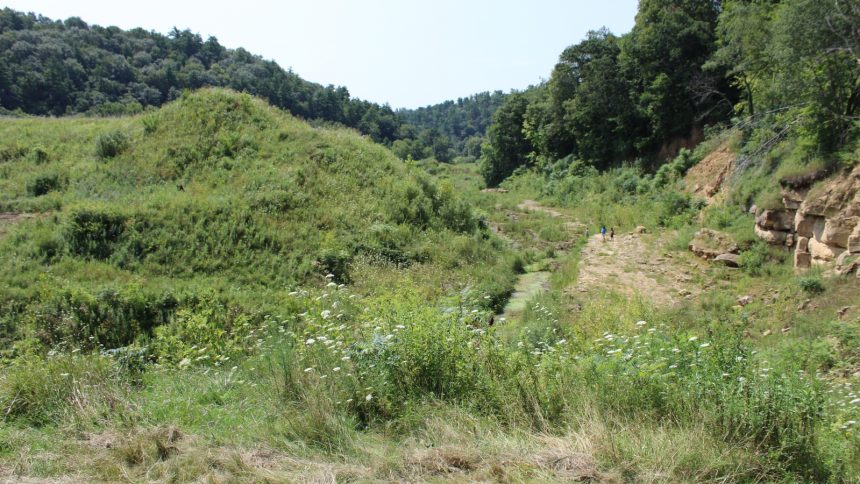Sheldon Auto Wrecking, a longstanding institution in Vernon County, Wisconsin, is situated in a picturesque valley just below the Maple Dale dam. For almost 70 years, this salvage yard has operated in the rural area, buying old vehicles and farm equipment to sell for parts. The dam, located less than a half-mile away, has shielded the yard from frequent and severe flooding in the region. However, the future of the dam is uncertain.
Maple Dale is part of a network of dams constructed by the U.S. Department of Agriculture’s Natural Resources Conservation Service in the mid-20th century for flood control. Following the failure of several dams in the region during a major rainstorm in 2018, a study revealed that additional dams, including Maple Dale, were at risk of collapse. Due to the high cost of replacement, local officials are considering decommissioning these dams by creating large notches to allow water flow, potentially making it the largest dam removal project in a single county in the U.S.
The aging infrastructure and intensifying floods due to climate change are putting pressure on dam owners across the country. The cost of repairs is estimated to be in the hundreds of billions of dollars, prompting tough decisions about the future of these structures. In Vernon County, the proposal to decommission the dams has sparked controversy among residents and property owners.
As dams reach the end of their contracts from the watershed programs, many communities will face similar decisions. A combination of aging infrastructure, urban development, and changing weather patterns poses a significant challenge to dam safety nationwide. Proper maintenance is crucial to ensure the continued effectiveness of these structures, but the complexities of each dam make it difficult to determine the best course of action moving forward.






